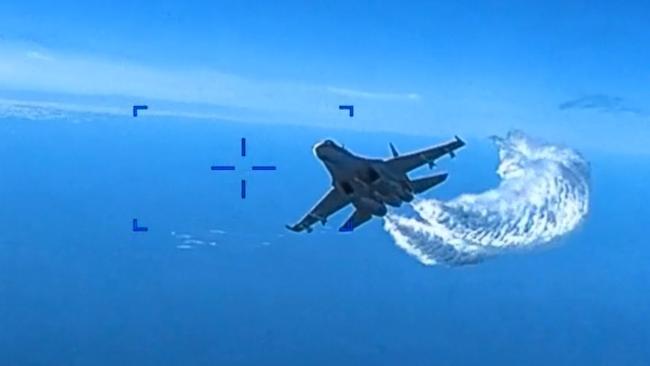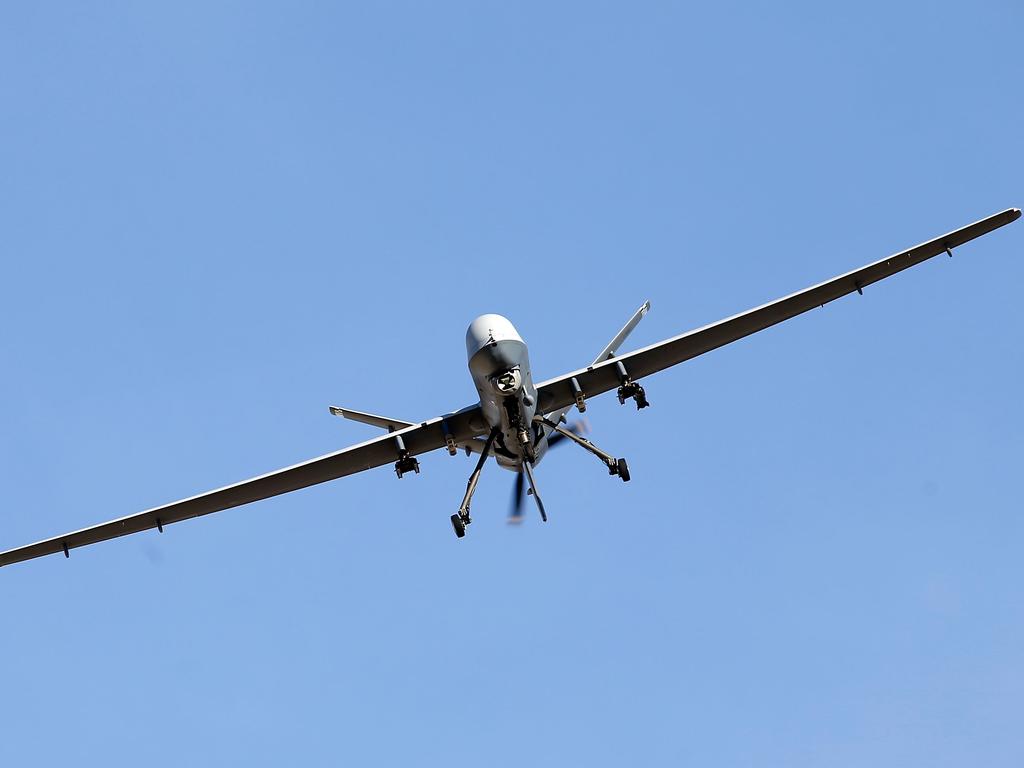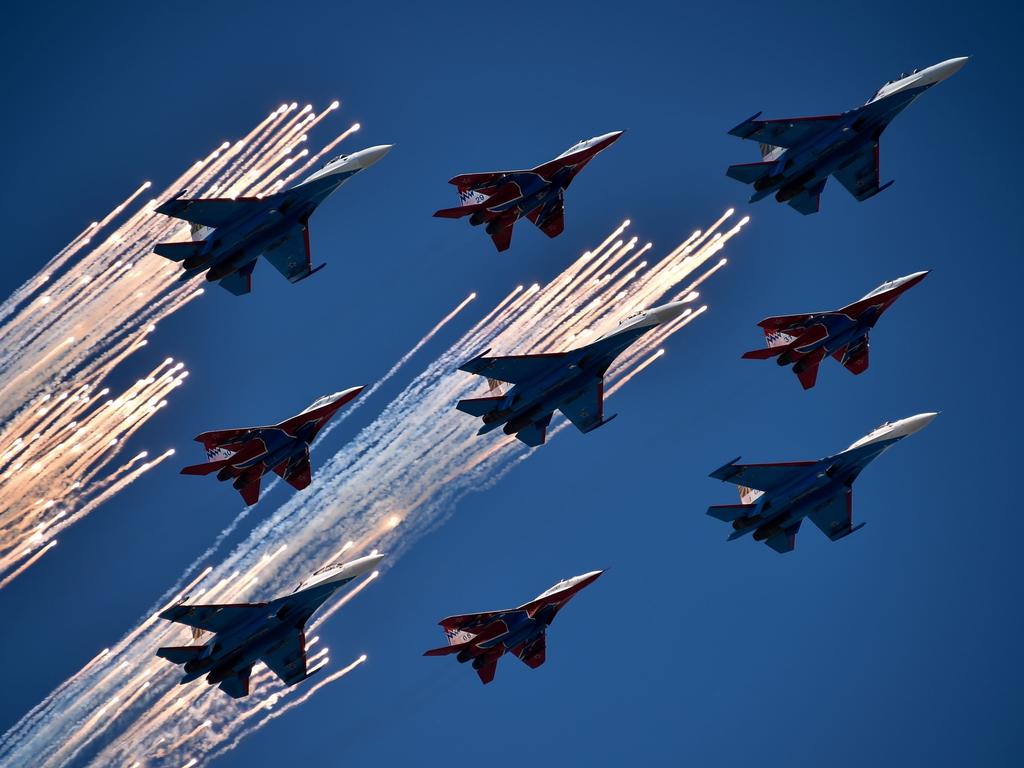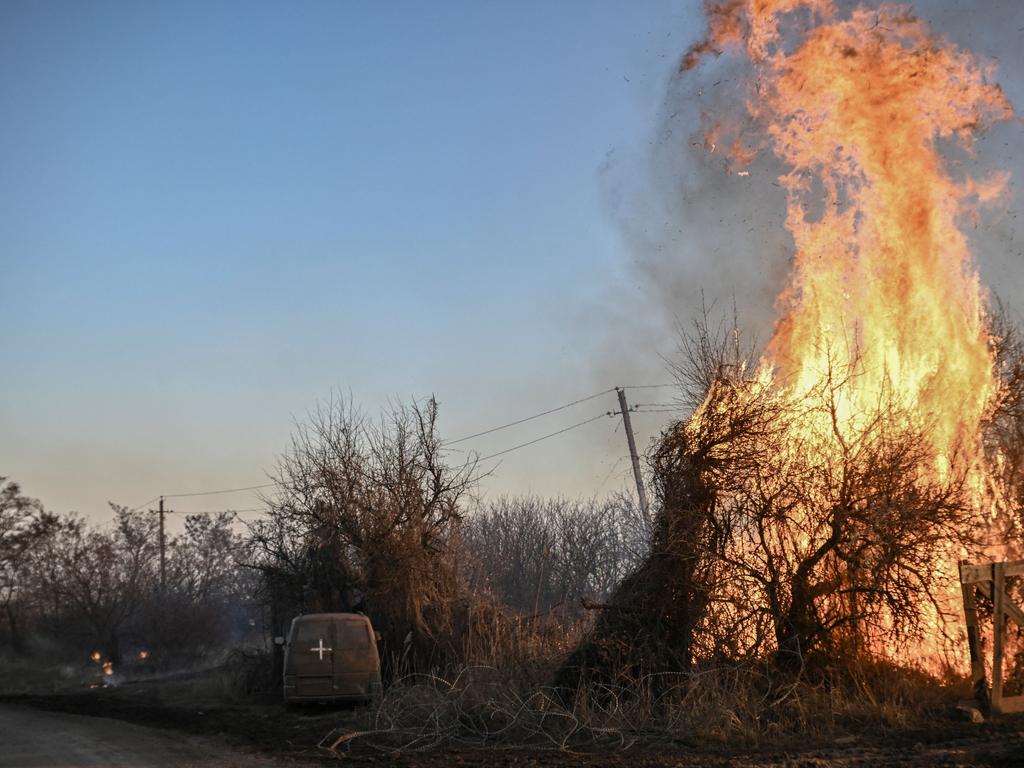Midair video shows Russian jet buzz US drone
The US has released video from a drone that crashed over the Black Sea showing a Russian jet dumping fuel on it and damaging its propeller | WATCH

The Pentagon released video footage in Thursday from a US MQ-9 drone that crashed in the Black Sea on Tuesday showing a Russian jet buzzing and dumping fuel on it and apparently damaging the drone’s propeller.
The declassified footage shows a Russian Sukhoi-27 jet flying very close to the unmanned surveillance aircraft, in one of the first direct military confrontations between the US and Russia since the invasion in Ukraine began more than a year ago. It wasn’t clear whether the video showed one jet flying past the drone twice, or both Russian jets that the Pentagon says were there.
The US said one of the Russian jets collided with the drone, also known as a Reaper, in international airspace, in what a Pentagon spokesman called an “unsafe, unprofessional intercept”. The footage doesn’t show an exact moment of collision, though it does show a Sukhoi flying directly toward the drone and coming into almost immediate contact, before the video feed is scrambled.
At the end of the 42-second clip, after the video feed resumes, the MQ-9 drone’s propeller appears bent. In a summary released alongside the video, the Pentagon said “the propeller can be seen again and one of the props can be seen damaged”. The drone’s remote operators subsequently flew it into the Black Sea, where it remains, the Pentagon said.
Russian state media showed the video on Thursday but didn’t comment on it. The State Department on Tuesday summoned Russian Ambassador to the US Anatoly Antonov for a meeting with Assistant Secretary of State for European and Eurasian Affairs Karen Donfried, according to a senior administration official.
Russia considered the drone incident a provocation, Mr Antonov said after the meeting, according to Russian state news agencies. Ms Donfried expressed concern over the incident but didn’t bring up repercussions for Russia, Mr Antonov said. Adding that Moscow isn’t looking for a confrontation with Washington, he described the meeting between the diplomats as constructive.
“We prefer not to create a situation where we can face unintended clashes or unintended incidents between the Russian Federation and the United States,” he said in comments to CNN.
Mr Antonov added that Ms Donfried conveyed US concerns about the incident, and said both sides “exchanged our remarks on this issue because we have some differences”.
Russian officials have disputed the US military’s account, saying it scrambled jet fighters because the drone flew in the vicinity of Crimea, the Black Sea peninsula Moscow annexed from Ukraine in 2014. Russia’s Defence Ministry denied that either of its jets collided with the drone. It said the drone went into an uncontrolled flight as a result of sharp manoeuvring.
The public release of classified drone footage, once an unusual step, fits into what has become a broader strategy by the US of publishing its intelligence on Russia’s actions in and around Ukraine. The US has tried to put Russia on the backfoot by openly disseminating information that might have otherwise been kept classified, such as details on Russian military manoeuvres, or the status of its artillery stocks.
The loss of an MQ-9 drone has tested another tenet of the Biden administration’s strategy in Ukraine, to avoid any direct confrontation with Russia. On Tuesday, the State Department summoned Mr Antonov for a meeting with Ms Donfried to express Washington’s objections to the intercept. The US envoy in Moscow conveyed a similar message to Russia’s Foreign Ministry Sergei Lavrov, State Department spokesman Ned Price said Tuesday.
The US regularly flies MQ-9 drones, which are built for long, high-altitude flights, in international airspace over the Black Sea. Tuesday’s incident marked the first time the US has lost a drone in that space, it said.
Russian and NATO jet fighters have routinely tangled for years in the skies along their shared borders, with Russian aircraft often crossing into Estonian or Polish airspace. On Tuesday, a British Typhoon and a German jet intercepted a Russian warplane flying close to Estonian airspace. The Russian plane had failed to communicate with an Estonian air-traffic controller, the UK’s Defence Ministry said.
Such interceptions have taken place hundreds of times a year, long before Russia invaded Ukraine. Last year, NATO planes intercepted Russian aircraft about 570 times; the year before that, 370 times.
As a matter of practice, pilots performing such intercepts try to communicate with the jet in question and fly alongside of it, matching its speed and trajectory. Pilots might rock their wings or use hand gestures to acknowledge contact.
Dow Jones







To join the conversation, please log in. Don't have an account? Register
Join the conversation, you are commenting as Logout